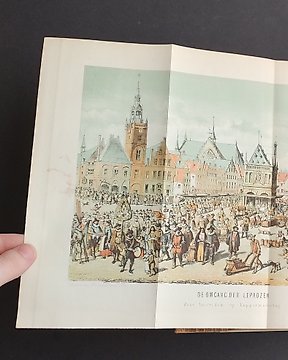
P. Scheltema - Aemstel's Oudheid of Gedenkwaardigheden van Amsterdam - 1855
Nº 83973581

Nº 83973581

PALLAS. Natuurlyke Historie van nieuwe en nog weinig bekende soorten van Dieren. Uit het Latyn van den Heer P. S. Pallas, ... Amsterdam 1779.
By PS Pallas and translated from the Latin and annotated by Pieter Boddaert 1730-1796.
Large quarto size, consisting of six parts, with ten coloured plates. In the original boards, which are well worn
but solid.
The coloured plates are remarkably bright and composed of hand-colouring using water-colours and gouache, giving them a luscious and sharp texture
Peter Simon Pallas FRS FRSE (22 September 1741 – 8 September 1811) was a Prussian zoologist, botanist, ethnographer, explorer, geographer, geologist, natural historian, and taxonomist. He studied natural sciences at various Universities in early modern Germany and worked primarily in the Russian Empire between 1767 and 1810. In 1767, Pallas was invited by Catherine II of Russia to become a professor at the St Petersburg Academy of Sciences and, between 1768 and 1774, he led an expedition to central Russian provinces, Povolzhye, Urals, West Siberia, Altay, and Transbaikal, collecting natural history specimens for the academy. He explored the Caspian Sea, the Ural and Altai Mountains, and the upper Amur River, reaching as far eastward as Lake Baikal. Some of this material was used in this book.
Pieter Boddaert (1730 – 6 May 1795) was a Dutch physician and naturalist. He became a lecturer on natural history at his alma mater, University of Utrecht. Fourteen letters survive of his correspondence with Carl Linnaeus between 1768 and 1775. He was a friend of Albert Schlosser, whose cabinet of "curiosities" of natural history he described.
A lovely text with beautiful plates.
Comment acheter sur Catawiki ?
1. Découvrez des objets d’exception
2. Faites la meilleure offre
3. Effectuez un paiement sécurisé